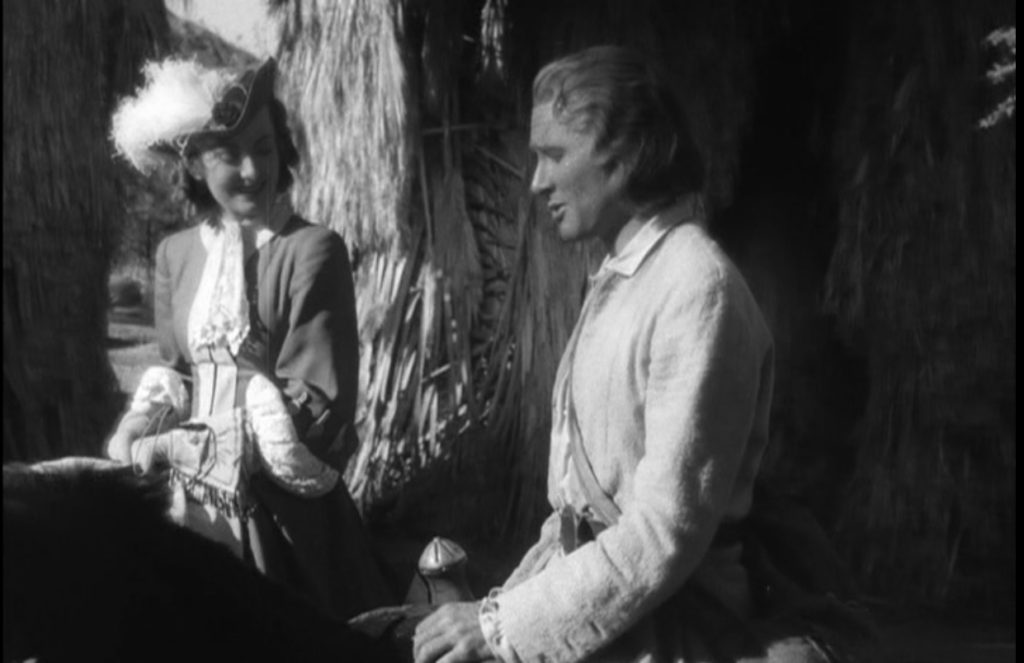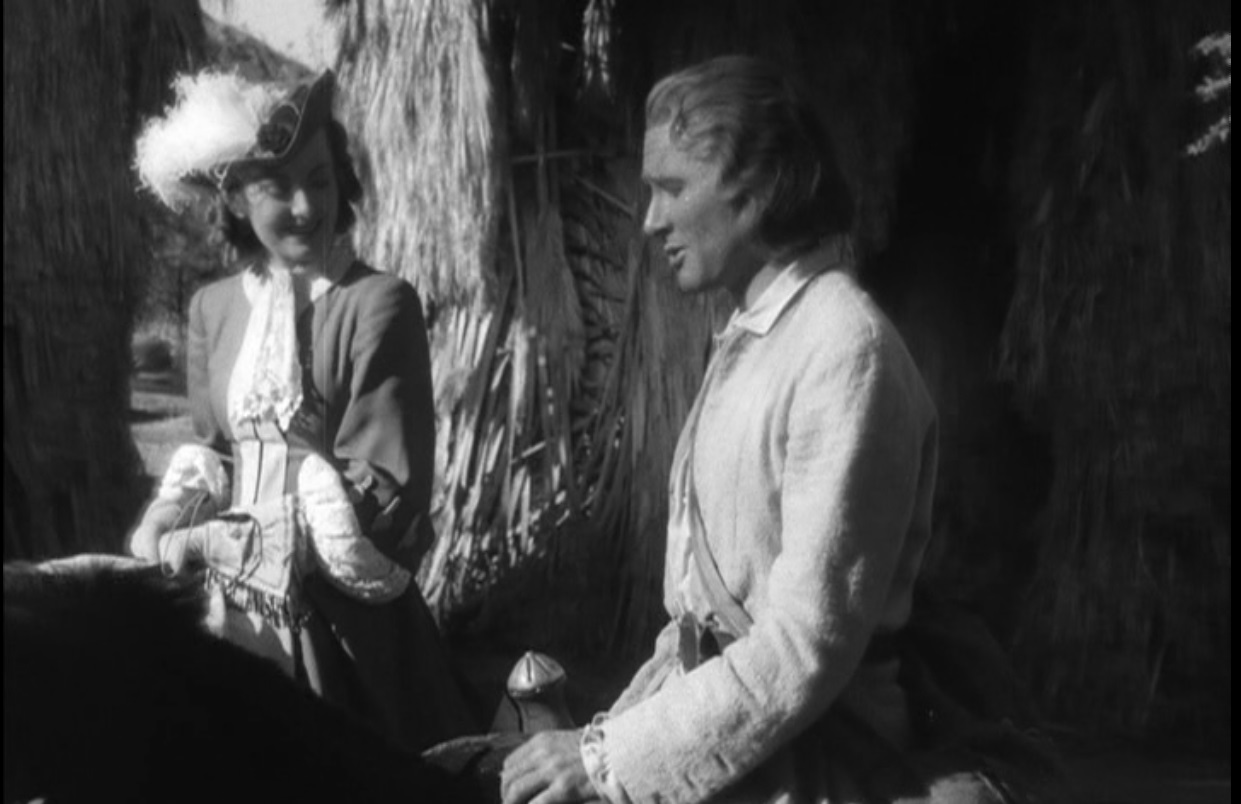Movie Review: Captain Blood (1935) directed by Michael Curtiz
When he was a wild Irish lad, Peter Blood (Errol Flynn) fought for the French against the Spanish, the Spanish against the French, and learned to sail with the Dutch. But with his earnings, he got training in the medical arts and retired from action to become a doctor. In 1685 Dr. Blood is called out of his bed to treat a wounded man. Unfortunately, the man is a rebel against King James II (Vernon Steele). And under the king’s proclamation, anyone who gives aid to a traitor is themselves a traitor. A cruel judge sentences Blood and the other rebels to hang, but the king is in need of cash, so the sentence is commuted to being transported to the West Indies and sold into ten-year slavery.

Peter’s pride initially would condemn him to the sulfur mines, but his handsomeness and bearing attracts the attention of Arabella Bishop (Olivia de Havilland) and she buys him. Having no actual need for a slave, she loans him to her uncle Colonel Bishop (Lionel Atwill) to work on his plantation. Discovering that Governor Steed (George Hassell) of Port Royal, Jamaica, is having no luck with the local doctors in treating his gout, Arabella gets Dr. Blood permission to leave the plantation from time to time to use his medical skills.
Discovering that his fellow slaves contain several trained sailors, Blood conceives a plan of escape.
A fortuitous coincidence gives him and his crew the chance to seize a Spanish man of war, and the doctor becomes Captain Blood, one of the two greatest pirates in the West Indies. The other is his new partner, Captain Levasseur (Basil Rathbone). But Colonel Bishop has sworn to take Captain Blood down, and there’s still the matter of that death sentence….
This 1935 movie based on the book by Rafael Sabatini was a return to full-on swashbuckler epics for Warner Brothers after a couple of similarly-themed but lower budget films had done well the year before. The leads were relative unknowns; this was Errol Flynn’s first major American role, and Olivia de Havilland had only been in one big picture before, only a few months prior, A Midsummer Night’s Dream. But they had a veteran director, a strong supporting cast, and an excellent composer for the soundtrack (though Erich Wolfgang Korngold lifted heavily from Liszt for lack of time and insisted on being listed as “musical arranger.” And audiences saw the chemistry between the leads and loved it.
This is indeed one of the classic Hollywood movies. Good acting, excellent direction, swell music, and let’s not forget the fight scenes! It’s nearly two hours, but they’re well-spent. There are fun supporting characters, like Honesty the man who isn’t honest, and the Reverend Ogden, preacher turned pirate with a bible verse for every occasion.
There are, as always, a few quibbles. King James II is perhaps historically mischaracterized to make him more villainous. Captain Blood may object to himself and fellow Englishmen being enslaved, but his hatred of slavery isn’t against the idea of it. (A few black people are seen in cameos, but none of them are relevant even though they too would be slaves.) There’s period sexism towards Arabella, who largely shrugs it off.
Content note: Slavery, torture, whipping. The women we see in Tortuga are heavily implied to be prostitutes. A man deliberately mutilates himself.
Overall: A great movie for enjoying a night in, or if you can see it at a film festival. My DVD had “Warner Brothers Night at the Movies” with extra shorts to simulate the whole moviegoing experience in 1935.

